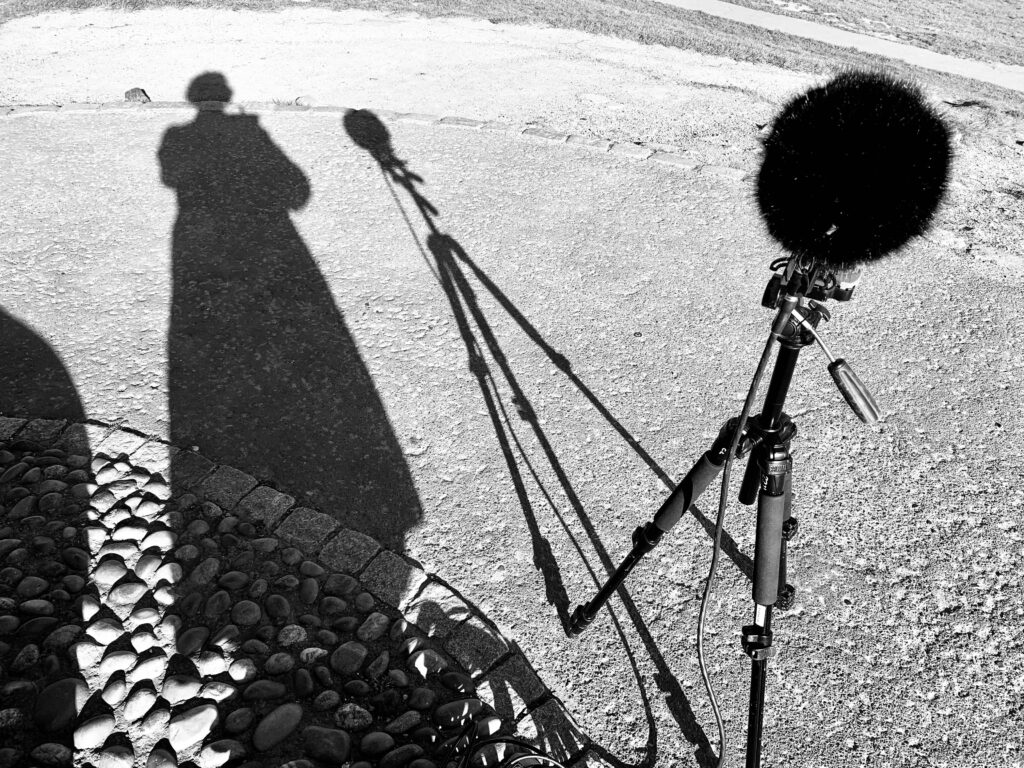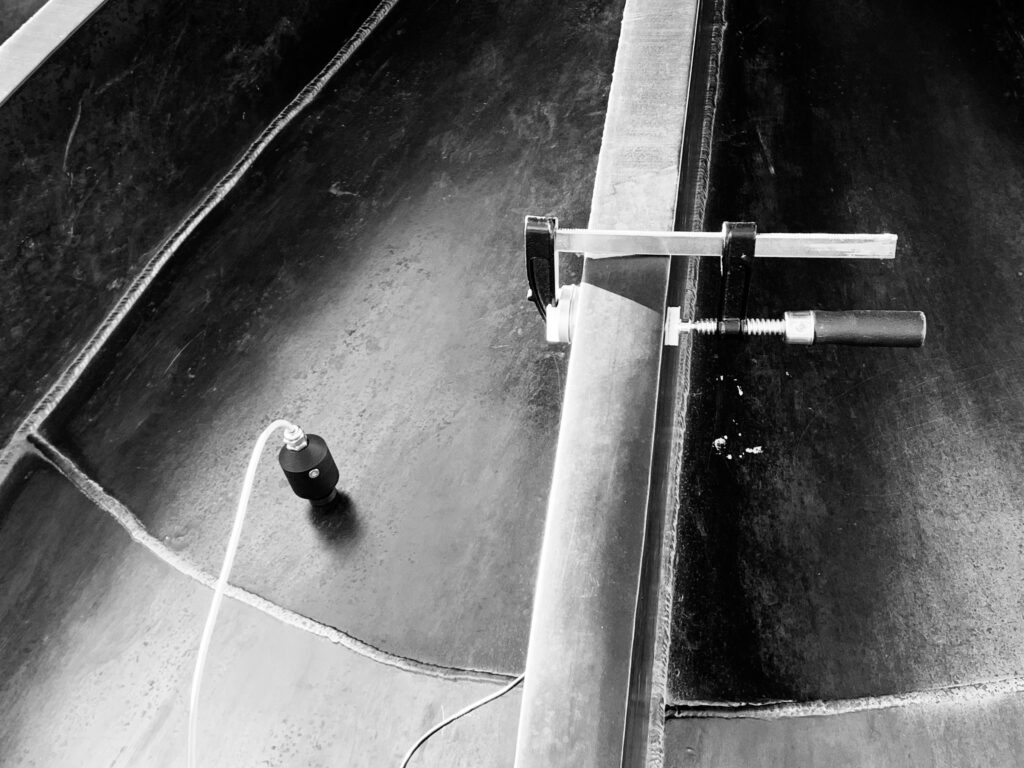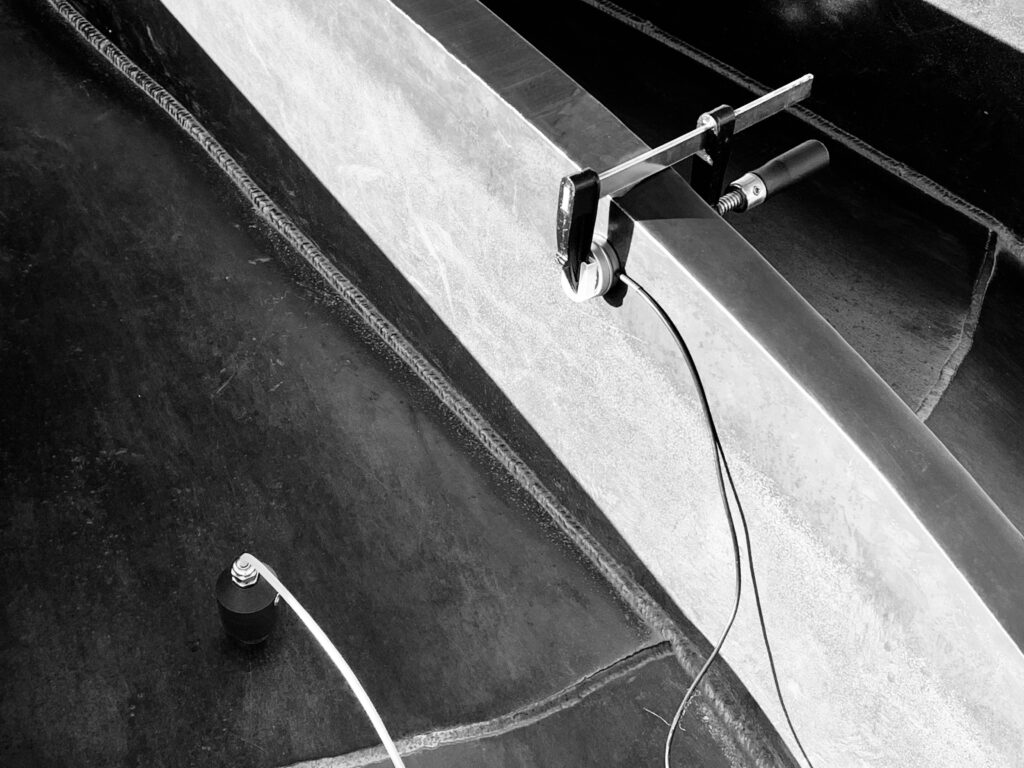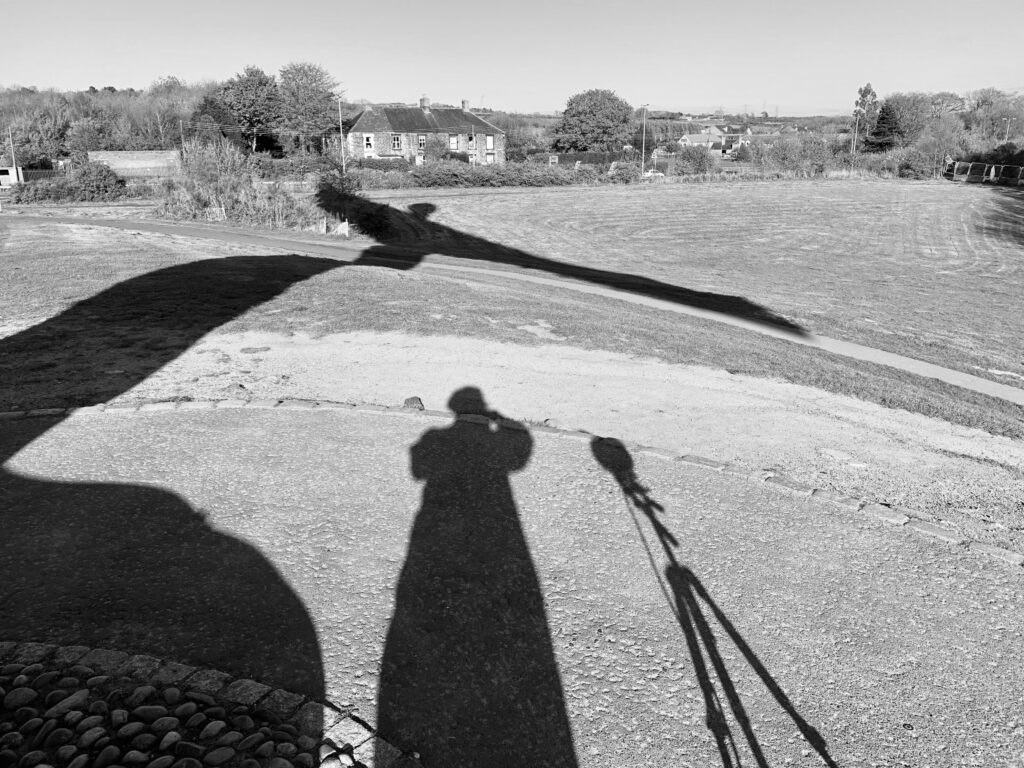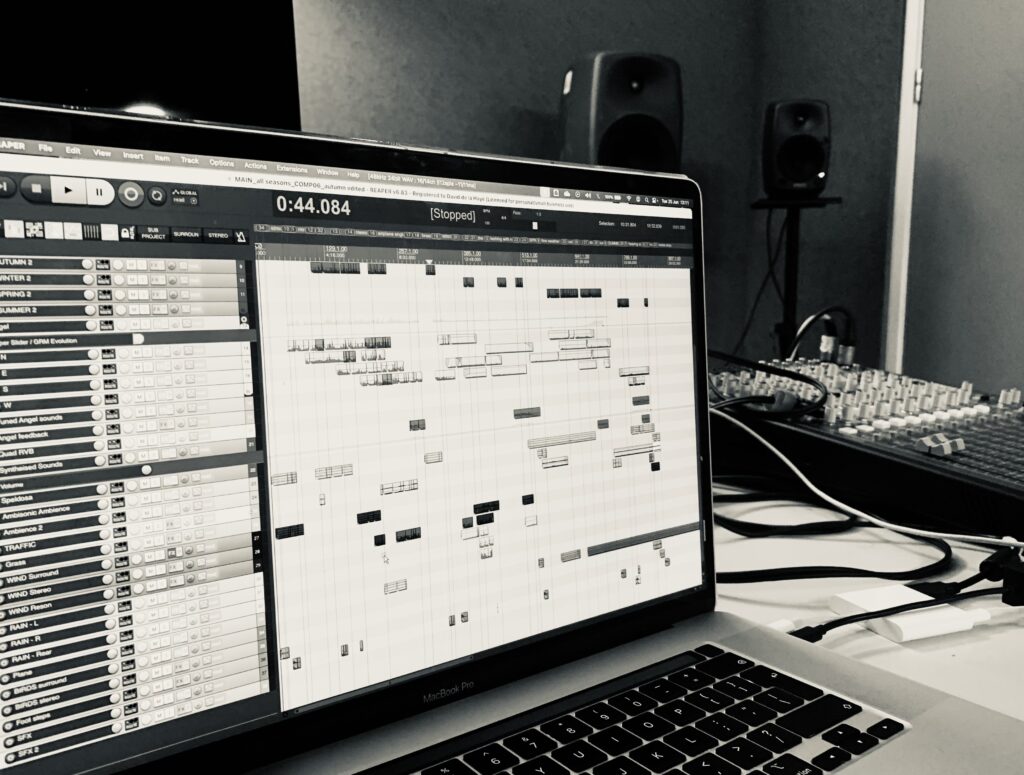
I spent this morning in the recording studio with David, editing the draft version of the sound piece. It was wonderful to hear the different layers of sound that David had built into the work, and the creative ways in which he was using the recordings we had made on site.
The photograph of David’s computer screen below gives a visual score for the layering of sound in the piece. The top layers represent the three voices in the project – mine and the two participants – ; the layers beneath represent the resonances of the Angel, which run throughout the piece, and the sounds of the traffic and the wind; and the lower levels are the sounds of birdsong, leaves in the trees, and grass whispering in the wind.
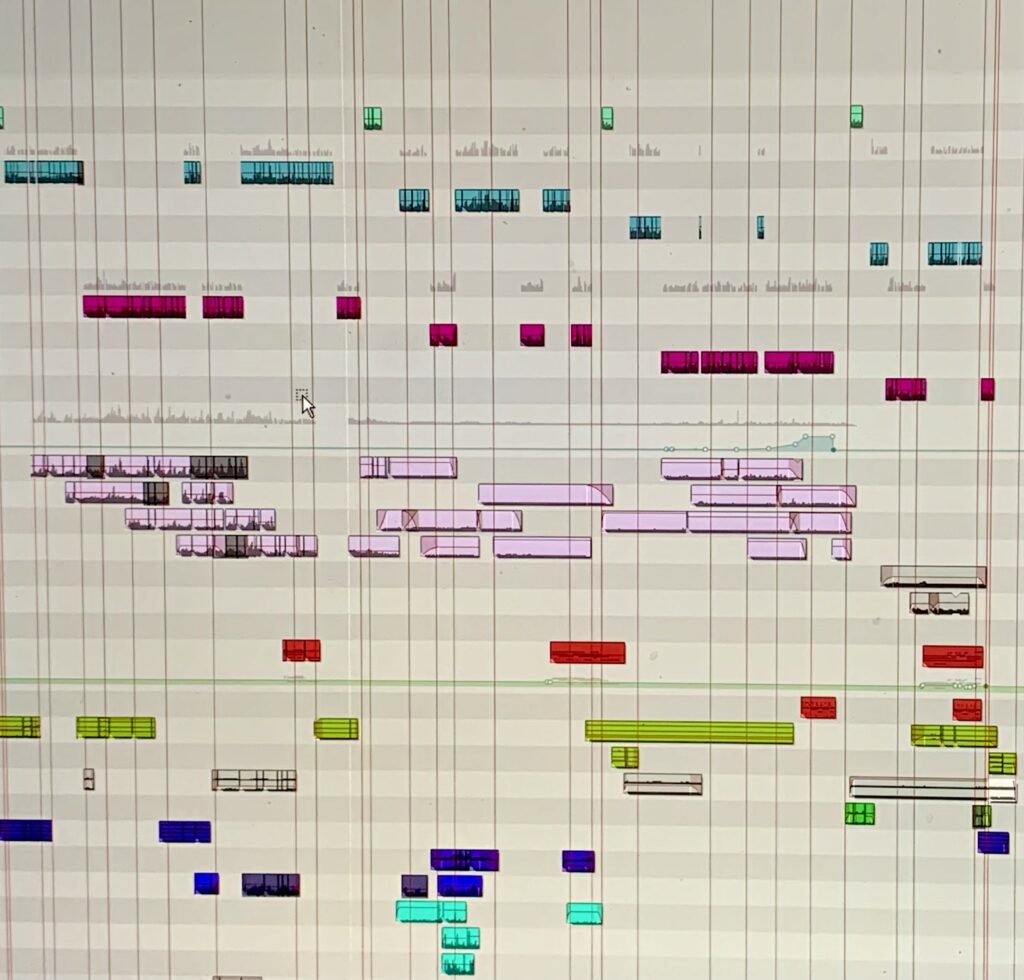
The addition of the field recordings to the recorded voices gives the words of the participants additional resonance, as David marked the moments in the conversations when they had made reference to weather or particular sounds, and enhanced them through recorded sound. The work is divided into four sections, corresponding to the seasons, and David used the contact microphone recording of the interior of The Angel for the relevant season. Listening to them in sequence, it was remarkable how much the vibrations from The Angel differed in tone across the year, with the winter recordings shaped by the violent wind and rain of the storms, and the summer recordings more vibrant and lively, capturing the muffled sounds of children playing and visitors chatting nearby.
The sound piece also captures a few memorable moments of the field recordings. From our summer visit to The Angel, David built in the song of the blackbird that I recorded singing from the top of a tree in the copse, as well as my recording of my own footsteps. The geophone captured the boom of The Angel contracting, and David used the sound to punctuate the sections of the work, like the regular tolling of a bell. David’s visit to The Angel to record during Storm Babet produced the echoing of the raindrops from the surface of the sculpture that can be heard in the Winter section of the piece.
The continual drone of The Angel (shown in pink above) reminded me of David’s recordings of the pithead at Easington Colliery, in its haunting evocation of the former mining communities. In our sound piece, it accompanies (and expands) the participants’ associations of The Angel sculpture with the mineworkers who had toiled beneath.
The sound piece will be installed in The Arches on the main campus at Newcastle University on Monday 1 July and will play from 1-7 July.

